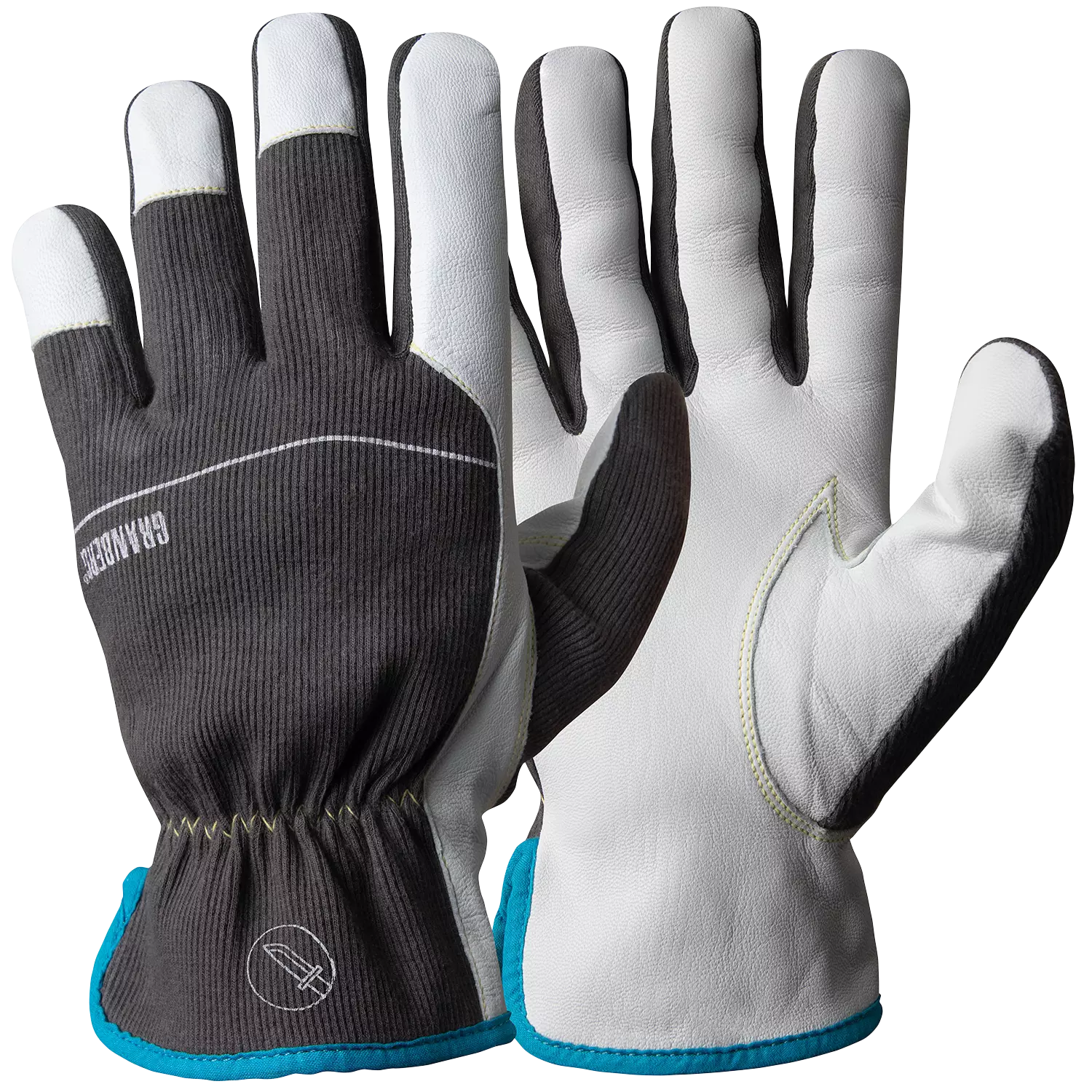These premium protective gloves combine goatskin palm construction with full Kevlar® lining to deliver exceptional cut and heat resistance while maintaining superior dexterity and comfort. The breathable cotton back provides excellent ventilation, while Kevlar® thread construction ensures durability and heat resistance up to 250°C. Engineered for demanding industrial applications, these gloves offer professional-grade protection with CE Category II certification.
Product Features:
- Goatskin palm with cotton back construction
- Full Kevlar® and Polyglass lining
- Sewn with Kevlar® threads
- Tight, comfortable fit
- Breathable design
Technical Details:
- Length: 22-27 cm
- Thickness: 0.6-0.8 mm
- Contact heat resistance: up to 250°C for 15 seconds
- Dry grip optimization
- Fully lined construction
Protection Ratings:
- Abrasion resistance: Level 3
- Tear resistance: Level 3
- Puncture resistance: Level 2
- Cut resistance: Level C
- Contact heat: Level 2
Recommended Applications:
- Material Handling
- Building and Construction
- Automotive manufacturing
Standards:
- CE Category II
- EN 420:2003+A1:2009
These premium protective gloves combine goatskin palm construction with full Kevlar® lining to deliver exceptional cut and heat resistance while maintaining superior dexterity and comfort. The breathable cotton back provides excellent ventilation, while Kevlar® thread construction ensures durability and heat resistance up to 250°C. Engineered for demanding industrial applications, these gloves offer professional-grade protection with CE Category II certification.
Product Features:
- Goatskin palm with cotton back construction
- Full Kevlar® and Polyglass lining
- Sewn with Kevlar® threads
- Tight, comfortable fit
- Breathable design
Technical Details:
- Length: 22-27 cm
- Thickness: 0.6-0.8 mm
- Contact heat resistance: up to 250°C for 15 seconds
- Dry grip optimization
- Fully lined construction
Protection Ratings:
- Abrasion resistance: Level 3
- Tear resistance: Level 3
- Puncture resistance: Level 2
- Cut resistance: Level C
- Contact heat: Level 2
Recommended Applications:
- Material Handling
- Building and Construction
- Automotive manufacturing
Standards:
- CE Category II
- EN 420:2003+A1:2009
These premium protective gloves combine goatskin palm construction with full Kevlar® lining to deliver exceptional cut and heat resistance while maintaining superior dexterity and comfort. The breathable cotton back provides excellent ventilation, while Kevlar® thread construction ensures durability and heat resistance up to 250°C. Engineered for demanding industrial applications, these gloves offer professional-grade protection with CE Category II certification.
Product Features:
- Goatskin palm with cotton back construction
- Full Kevlar® and Polyglass lining
- Sewn with Kevlar® threads
- Tight, comfortable fit
- Breathable design
Technical Details:
- Length: 22-27 cm
- Thickness: 0.6-0.8 mm
- Contact heat resistance: up to 250°C for 15 seconds
- Dry grip optimization
- Fully lined construction
Protection Ratings:
- Abrasion resistance: Level 3
- Tear resistance: Level 3
- Puncture resistance: Level 2
- Cut resistance: Level C
- Contact heat: Level 2
Recommended Applications:
- Material Handling
- Building and Construction
- Automotive manufacturing
Standards:
- CE Category II
- EN 420:2003+A1:2009
